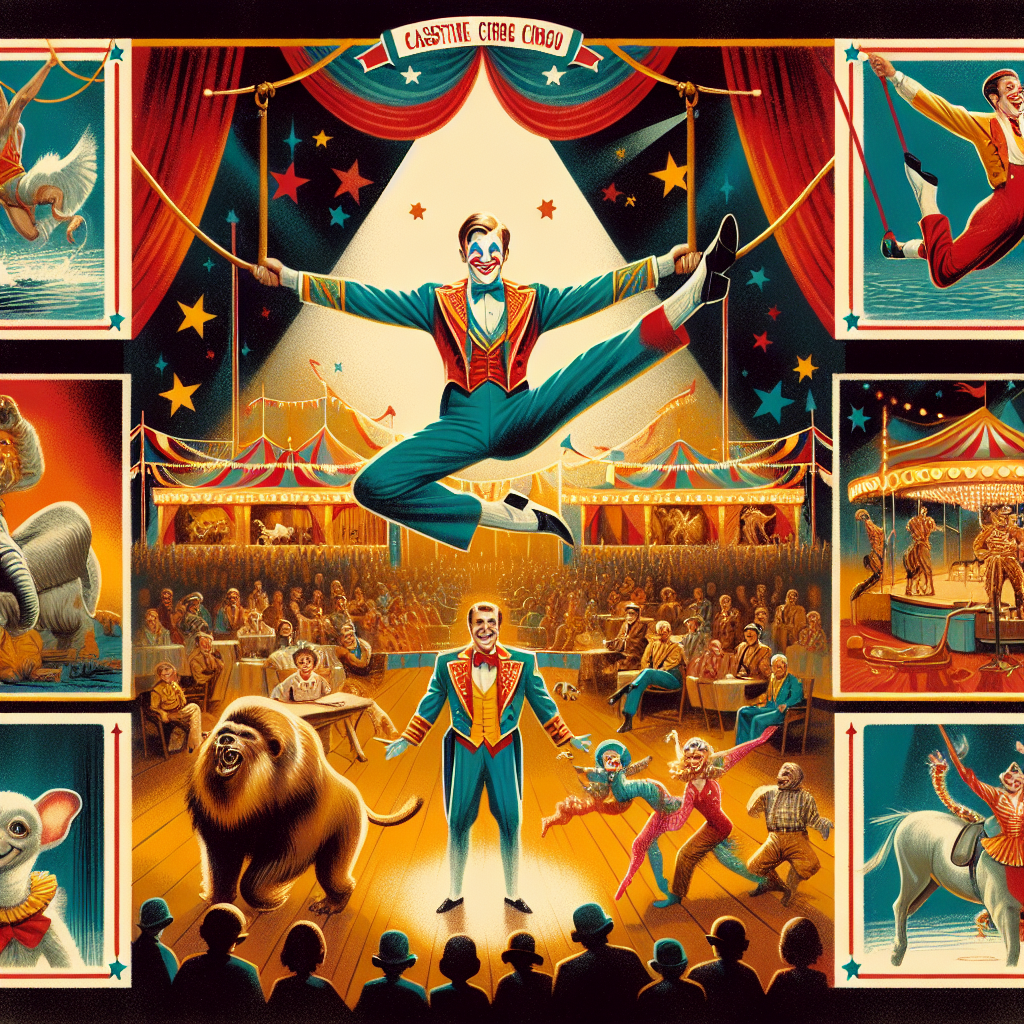Discover the Timeless Magic of The Greatest Show on Earth (1952) – A Classic Circus Extravaganza!
Introduction and Significance
"The Greatest Show on Earth," directed by Cecil B. DeMille, premiered in 1952, encapsulating the grandeur and excitement of a circus through the magic of cinema. It stands as a hallmark in film history, not merely because of its dazzling spectacle but also due to its victory at the Academy Awards where it won Best Picture. This achievement, however, is enveloped in controversy; many critics argue that it was not the best film of its year. Nevertheless, the film’s flamboyant portrayal of circus life, marked by DeMille’s rich visual style and epic storytelling, has solidified its place in the annals of American cinema.
Main Themes
Central to "The Greatest Show on Earth" is the theme of spectacle versus substance. The film presents the circus as a metaphor for show business, drawing parallels between the glitz and glamour of performance and the genuine human emotions and struggles behind the scenes. It’s a reflection on the dichotomy of public personas versus private vulnerabilities, an exploration dramatized through its ensemble cast.
Another significant theme is camaraderie amidst competition. While the performers vie for the spotlight under the big top, offstage they form a tightly-knit community bound by mutual respect and shared hardship. This theme serves to humanize the larger-than-life characters, grounding the lavish spectacle in relatable human experiences.
Character Arcs
The characters in "The Greatest Show on Earth" are as colorful and multifaceted as the circus itself. Charlton Heston stars as Brad Braden, the steadfast and determined circus manager. His character is portrayed as fanatically devoted to the circus, sometimes to the detriment of his personal relationships. His arc is one of stoic duty evolving into a recognition of deeper personal connections and vulnerabilities.
Holly (Betty Hutton), the trapeze artist, personifies ambition and resilience. Her trajectory involves striving to prove her prowess in the center ring and grappling with romantic entanglements. Hutton’s vibrant and physically demanding performance breathes life into Holly, making her a character of admirable strength and vulnerability.
Cornel Wilde’s The Great Sebastian, the devil-may-care trapeze artist, introduces an element of rivalry and romance. His reckless bravado masks insecurities that unravel throughout the film, contributing to a transformative journey from arrogance to humility.
James Stewart’s portrayal of Buttons the Clown is perhaps the most poignant. Decked in clown makeup throughout the entirety of the film, Buttons harbors a tragic secret, revealing the irony and sorrow often hidden behind the facades of those who make others laugh. Stewart’s performance is subtle yet deeply affecting, highlighting the theme of hidden sorrow.
Cinematic Techniques
Cecil B. DeMille’s directorial approach in "The Greatest Show on Earth" is quintessentially grandiose. Utilizing technicolor cinematography, he lavishly captures the vibrant essence of the circus, immersing audiences in the visual splendor. The use of wide shots to display the enormity of the circus tents contrasted with intimate close-ups during emotional moments enhances the film’s narrative dichotomy of grandeur and intimacy.
The film’s editing is particularly noteworthy during the intense trapeze sequences. Rapid cutting combined with dynamic camera angles creates a sense of exhilaration and peril, mirroring the high-stakes drama of circus life. Moreover, the climactic train wreck scene is a spectacle of practical effects and meticulous staging, underscoring DeMille’s commitment to visual storytelling.
Cultural and Social Contexts
"The Greatest Show on Earth" is also a reflection of the post-World War II era, a time when Americans sought escapism through lavish entertainment. The circus, with its promises of wonder and awe, represented a temporary reprieve from everyday struggles. DeMille’s film, with its star-studded cast and extravagant production, symbolizes this cultural zeitgeist.
Socially, the film speaks to themes of inclusivity and diversity, albeit subtly. The circus is portrayed as a melting pot of characters from diverse backgrounds, working together in harmony. This harmonious coexistence within the microcosm of the circus, juxtaposed against the turmoil outside, subtly comments on ideals of unity and cooperation.
Legacy and Lasting Influence
Despite mixed critical reception regarding its artistic merit compared to other films of its time, like "High Noon" or "Singin’ in the Rain," "The Greatest Show on Earth" has left a lasting legacy. It influenced future filmmakers in their depictions of grand spectacles and ensemble casts. The film’s focus on behind-the-scenes drama in an elaborate setting foreshadowed the rise of similar narrative structures in film and television.
In popular culture, the film contributed to the romanticized image of the circus in the American imagination. Its impact can be seen in works ranging from "Cirque du Soleil" productions to television series like "American Horror Story: Freak Show."
Reflective Conclusion
"The Greatest Show on Earth" invites reflection on the nature of entertainment and the intricate lives of those who dedicate themselves to it. As modern audiences, we can ponder:
- How does current entertainment media compare to the spectacle-driven narratives of mid-20th century cinema?
- In what ways does uncovering the behind-the-scenes struggles of performers enhance our appreciation of their art?
- Can the cooperative spirit depicted in the film offer lessons for contemporary societal challenges?
Ultimately, the film’s enduring relevance lies in its ability to merge spectacle with substantive storytelling, leaving audiences with a richer understanding of the balance between public performance and private humanity. Whether viewed as a historical artifact or a piece of cinematic artistry, "The Greatest Show on Earth" continues to inspire and captivate, underscoring the timeless allure of the circus and the profound stories woven within its tent.
Got more questions? Our personalized Movies Explorer AI assistant is here to help. Click here to start a conversation!
[Advertisement]
Looking for deeper meaning in your favorite movies? Discover how ANY movie relates to positive biblical principles with Movies and Scripture GPT from BGodInspired.com. Click here to explore insights you might not have realized! . Simply key in any movie and let it show you insights you might not have realized otherwise!
[Advertisement]

